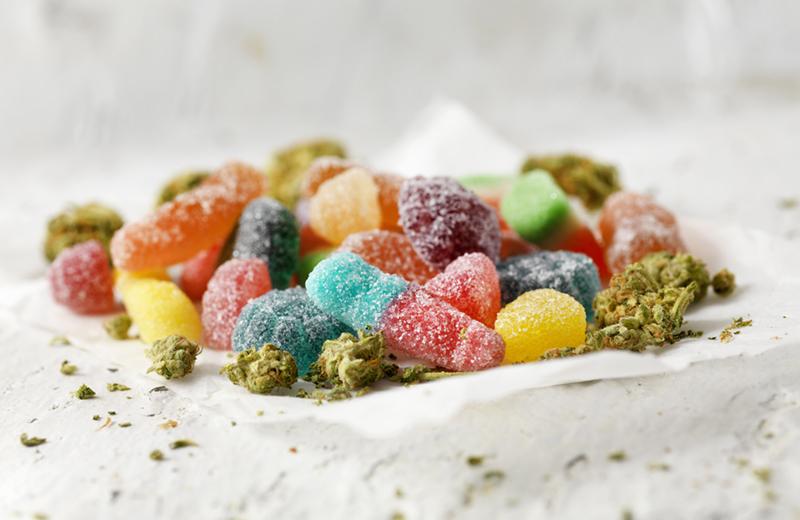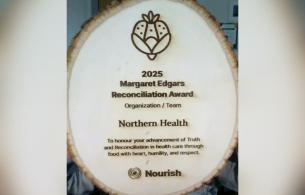With no packaging or labels, can you spot the difference between regular candy gummies and cannabis gummies? Hint: One’s safe for children, and the other isn’t.
Without proper storage, packaging, and labels, it would be easy for a child or youth to consume a cannabis product, thinking it was just a piece of candy. Put yourself in the shoes of a toddler: If it looks good, they eat it.
Cannabis became legal in Canada in the fall of 2018, with edible products available in the late fall of 2019. When it comes to cannabis edibles, also referred to as cannabis-infused food/ drink, or just “edibles”, there’s an array of products out there, including teas, gummies, cookies, and brownies.
The risk, of course, is that children can mistake these tasty-looking edibles for appetizing sweets and eat them. Looking at the photo above, it’s easy to see why. Because of the way they explore the world around them, children between the ages of one and three are at the highest risk. What do toddlers do best? Touch everything and put it in their mouths!
Looks can be deceiving
That said, the risk of poisoning is not limited to toddlers. I have a seven-year-old who recently found a package of what looked like Tic Tacs® at a local restaurant and was ready to help himself to the lovely minty treats. Yikes! There’s always the opportunity to have open discussion with your children about unknown products that may cause harm – I should know!
The dangers of cannabis for children
Cannabis in any form can be dangerous for children, and young children’s small body size and weight make them more vulnerable to cannabis poisoning.
According to the injury prevention website Parachute Canada, “While cannabis is a legal substance for adults in Canada, remember that this drug, just like alcohol and prescription drugs, can do serious harm to children and needs to be stored securely.”
The signs and symptoms of cannabis poisoning in a child can vary from mild to severe. The body has to digest cannabis first to feel the effects, which can take some time, usually about 30 minutes to two hours. Therefore, a child’s reaction may not appear right away, but can show up hours later.
What to watch for:
- Anxiety
- Difficulty breathing
- Drowsiness
- Lack of coordination
- Sleepiness
- Slurred speech
If you know or suspect that your child has eaten a cannabis product, call 9-1-1 immediately
You can also call the BC Drug and Poison Information Centre at 1-800-567-8911. They’re open 24 hours a day, seven days a week, and offer services in 150 different languages.
Resources
- Visit the cannabis page on Parachute Canada’s site.
- To prevent accidental cannabis poisonings in children and youth, remember the four steps of “OOPS”:
- Outside: If you use cannabis by smoking or vaping, use it outside to avoid exposing children to second-hand smoke.
- Out of sight: Never consume cannabis in any form in front of children, whether for medical or recreational purposes.
- Proper disposal: Make sure you dispose of all unused cannabis and related products, like ashes, unfinished joints, or pieces of edibles. Put cannabis products away after every use, even if you plan on using them again later.
- Secure storage: Keep all cannabis products locked up tight out of reach and out of sight.














Comments